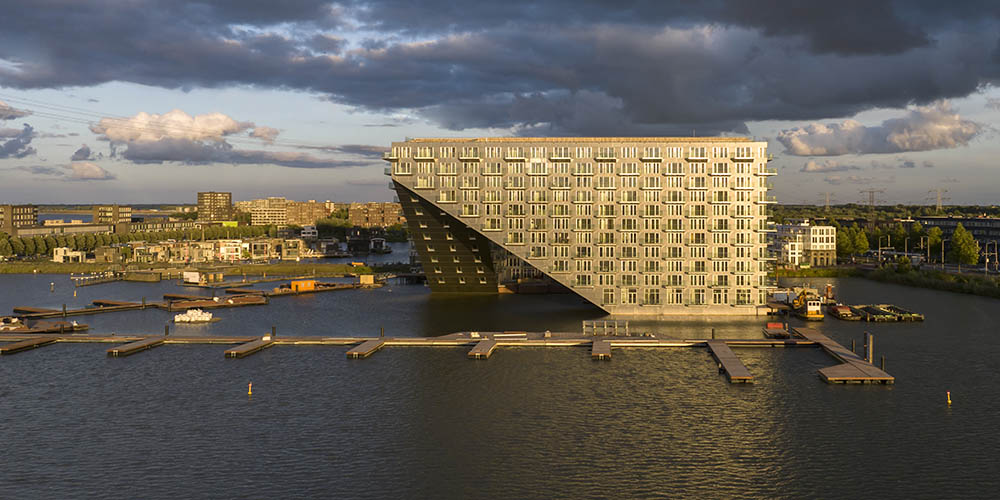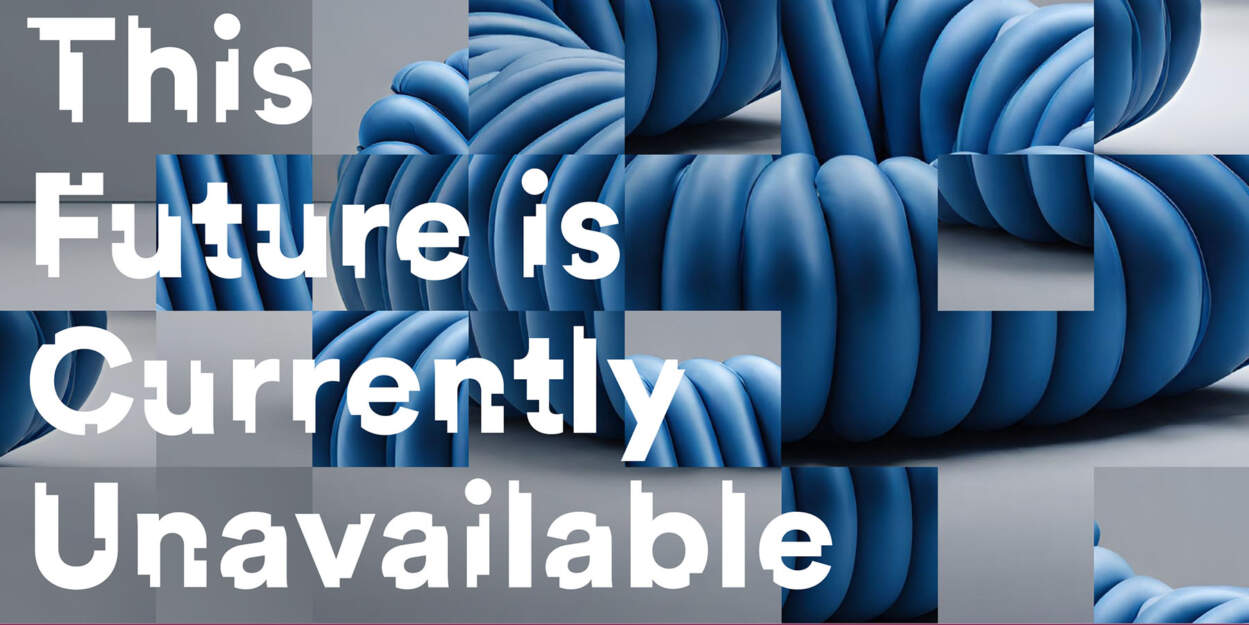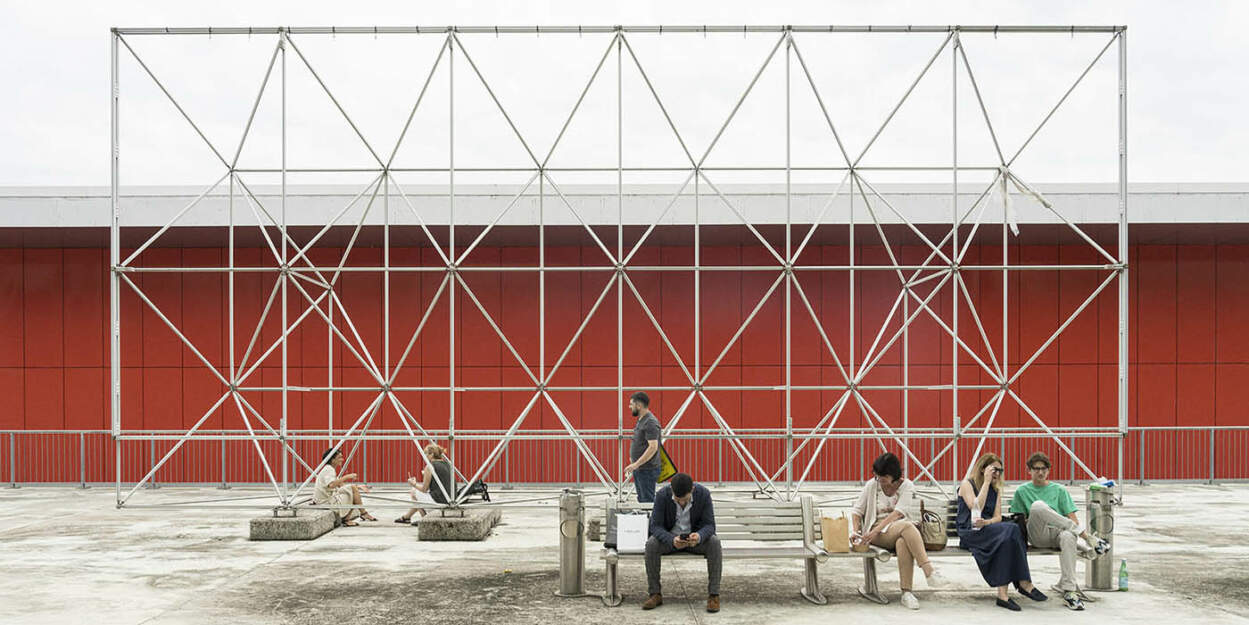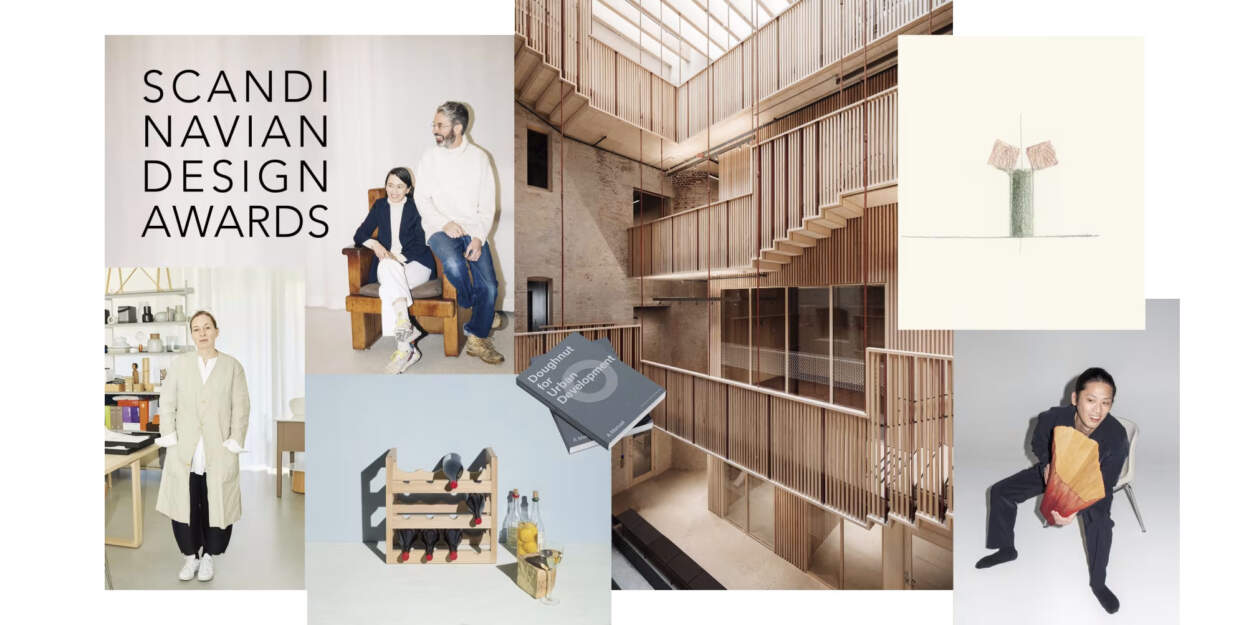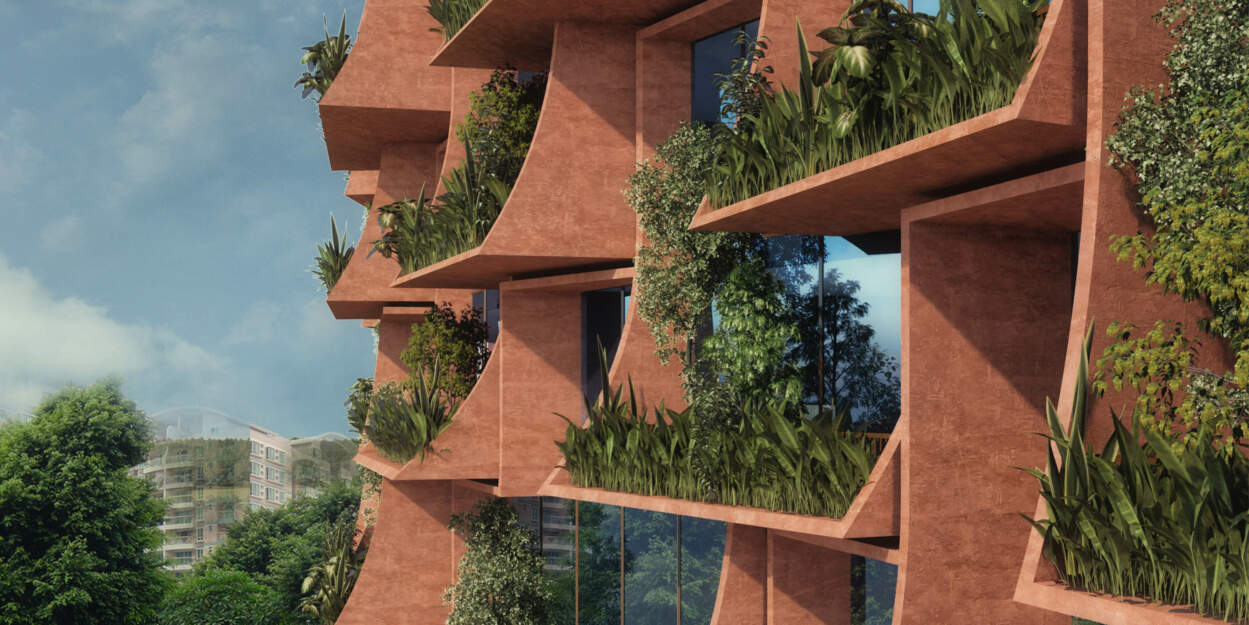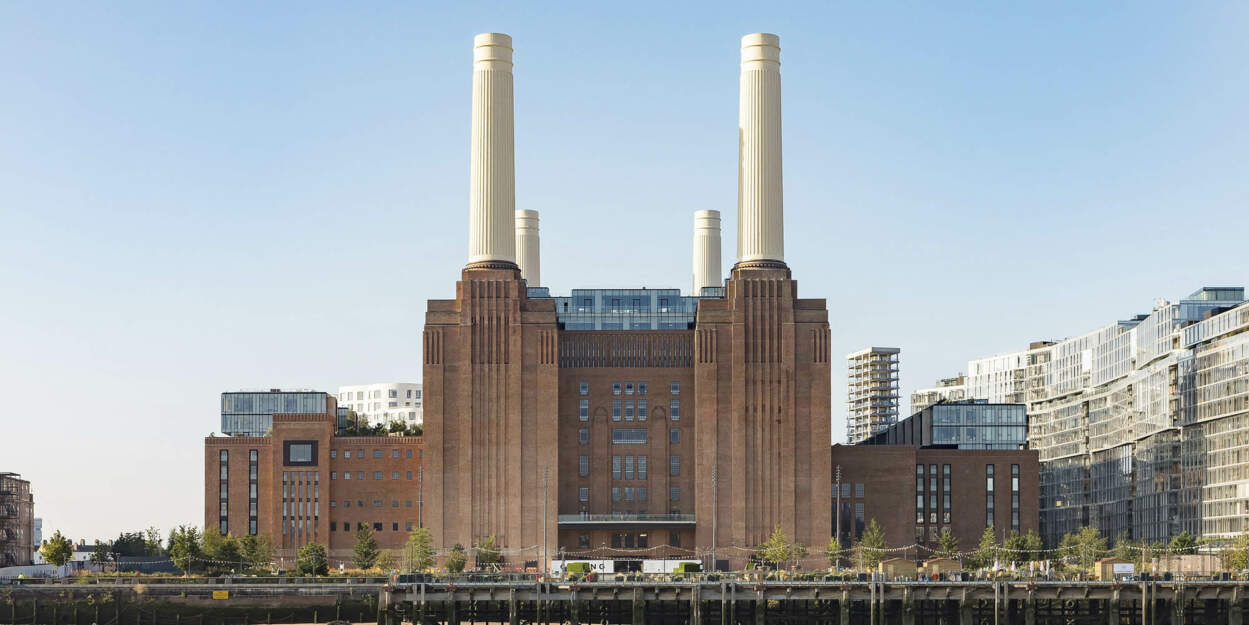Modern architecture in Amsterdam has a new iconic landmark: after four years of construction, Sluishuis has been completed.
IJburg is a residential neighbourhood under construction situated on artificial islands which have been raised from the lake.
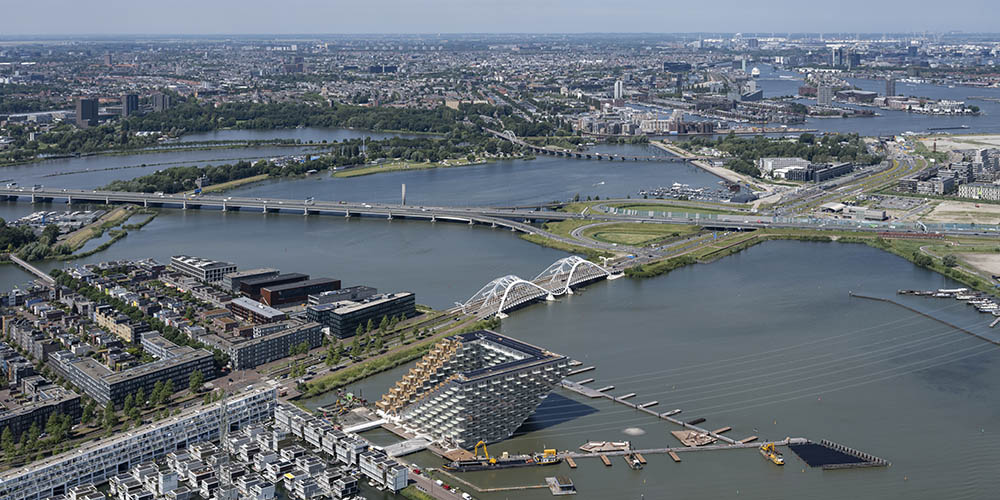
The new building forms a bridge between IJburg and the city center. With 442 different types of owner-occupied and rental homes, a public green roof garden with a rooftop walkway, bird and recreational islands, jetties for boats, and catering facilities, Sluishuis is a place for everyone.
The building started when the municipality of Amsterdam declared the combination VORM and BESIX RED winner of the quality tender for the development and construction of Sluishuis in 2016.
For the design of this unique building, the developers group joined forces with architects BIG Bjarke Ingels Group and Barcode Architects, both featured in our editorials “best architecture firms in Denmark” and “best architecture firms in the Netherland“.
They entrusted the complex construction to BESIX Nederland and VORM Bouw. The result of their shared vision is an iconic development in which sustainability and well-being of residents and visitors are key.
Sluishuis offers a modern and sustainable way of living on and around water.
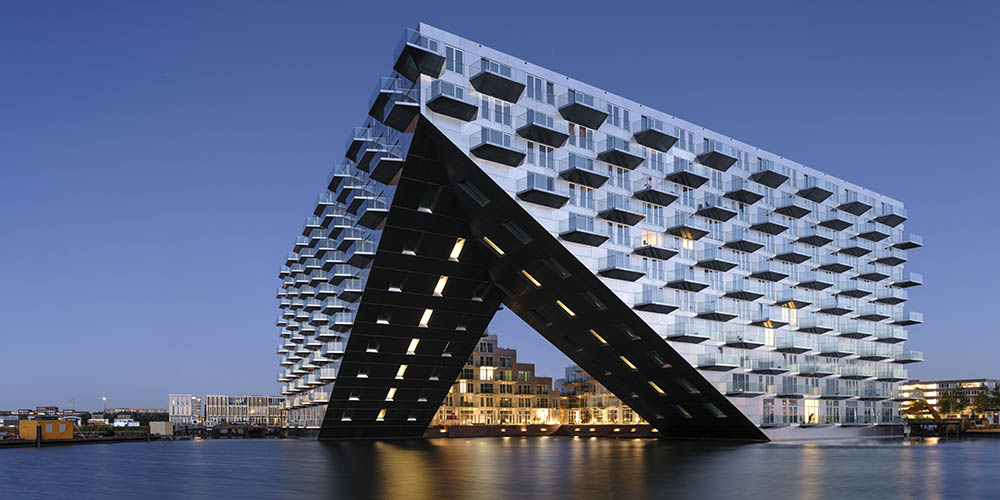
It is a remarkable building with a unique volume that seems to float on the water thanks to the double cantilever. The cantilevers come together in a high corner that forms a large gateway from the IJ to the inner harbor of the building. On the other side, the building is complemented with stairs leading towards its rooftop and green, welcoming terraces: an inviting gesture towards the neighborhood of IJburg.
“Having spent my formative years as an architect in Holland at the end of the 20th century, it feels like a homecoming to now get to contribute to the architecture of the city that I have loved and admired for so long. Our Sluishuis is conceived as a city block of downtown Amsterdam floating in the IJ Lake, complete with all aspects of city life. Towards the city, the courtyard building kneels down to invite visitors to climb its roof and enjoy the panoramic view of the new neighborhoods on the IJ. Toward the water, the building rises from the river, opening a gigantic gate for ships to enter and dock in the port/yard. A building inside the port, with a port inside the building.” Bjarke Ingels, Founding Partner, BIG
Sluishuis consists of 442 energy-neutral owner-occupied and rental apartments and an offer featuring houseboat lots, jetties for pleasure crafts, hospitality facilities, commercial spaces, and a fully integrated water landscape with islands for recreation, water sports, fauna and flora, and even power generation.
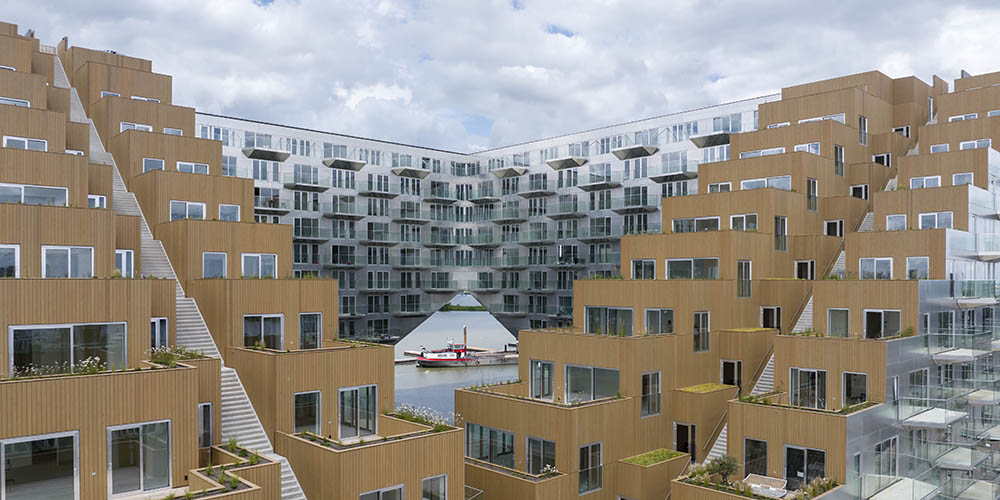
The project is largely publicly accessible. Residents and visitors can linger in the inner harbor, enjoy the promenade with stunning rooftop views, and benefit from the jetties and islands, spot water birds or admire the historic houseboats.
“With iconic architecture and new residential typologies, high-quality outdoor spaces and breathtaking views of the IJmeer, Sluishuis is a new landmark for IJburg and Amsterdam.” Dirk Peters, Co-founder Barcode Architects
This residential building offers different apartment types and was designed for a variety of target groups, income levels, and age categories.
In addition to compact city studios and water sports apartments, Sluishuis features duplex penthouses with views on both the inner harbor and the IJ-lake. The stepped part of the building comprises premium apartments with luxurious wooden sun-oriented roof terraces with views over IJburg. The apartments at the bottom of the cantilever with splendid views over the IJ-lake are particularly remarkable.
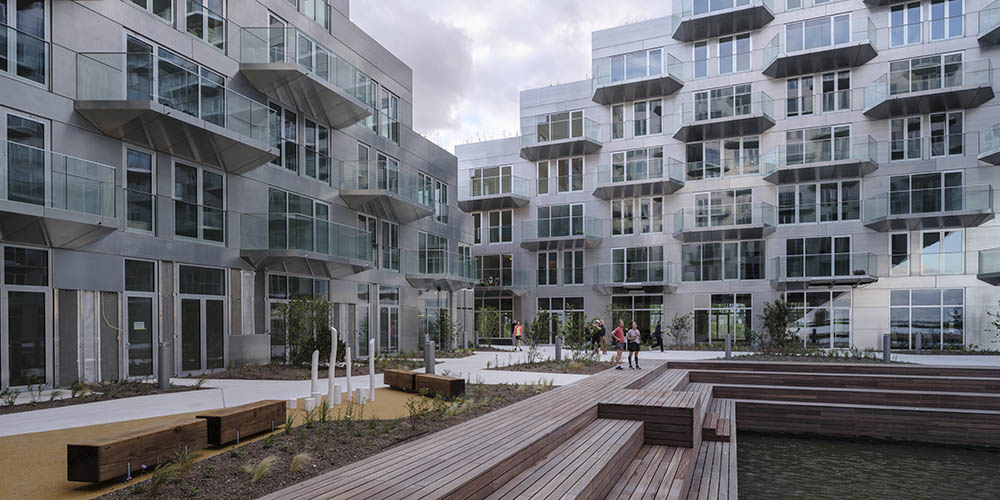
The sustainability of Sluishuis is an integral part of the project.
With an energy performance coefficient (EPC) of 0.00, the building generates more energy than it consumes. The building's heating requirements are minimized by combining high-performance insulation techniques, triple glazing, and heat recovery on the ventilation systems and wastewater. Energy consumption is further reduced by a heat and cold storage (CHS) system in the ground for heat and cooling in combination with a connection to the district heating system for peak times.
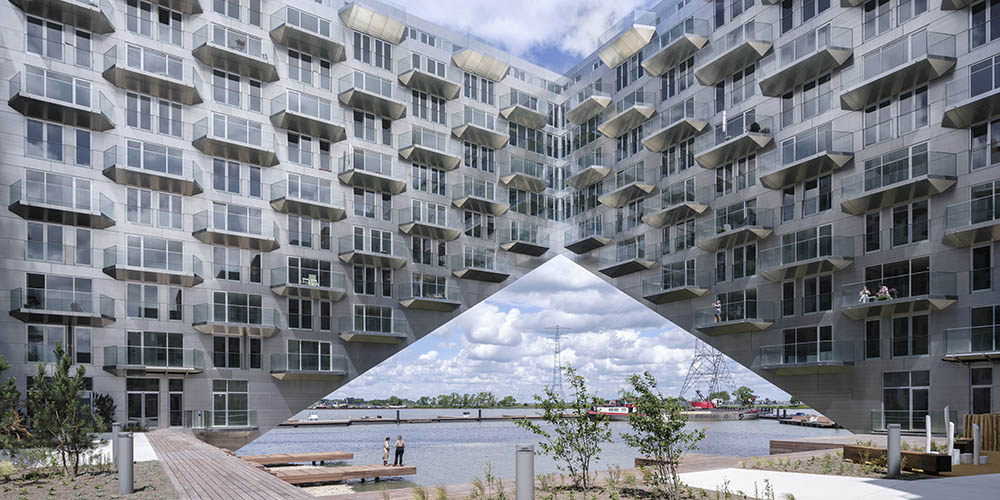
The remaining energy consumption for heating, heat pumps, ventilation, and LED lighting is fully compensated by approximately 2,200 m² of solar panels, to which an entire floating island adjacent to the project is dedicated. The development team of Sluishuis paid particular attention to green space and water collection. The front sides and the inner harbor of the building feature gardens with local plant species. The greenery runs across the roof terraces up into integrated planters, creating a pleasant green atmosphere.
In addition to the building's sustainable features, this new building aims to stimulate and strengthen the social connections between residents and visitors. The staggered balconies encourage relationships and exchanges. The public walkway towards the rooftop, but also the children's playground in the inner harbor, the landscape with jetties, and the wooden roof terraces promote spontaneous encounters.
Hans Meurs, CEO VORM: “If we were to design all the Netherlands like Sluishuis, we would no longer have an energy problem and loneliness would be almost impossible. A successful project in every sense of the word. We all worked with passion on this project. That makes me proud.”
The building materials contrast and connect with their environment. Natural materials were chosen for their material palette, which will give the building a rich and natural look over the years.
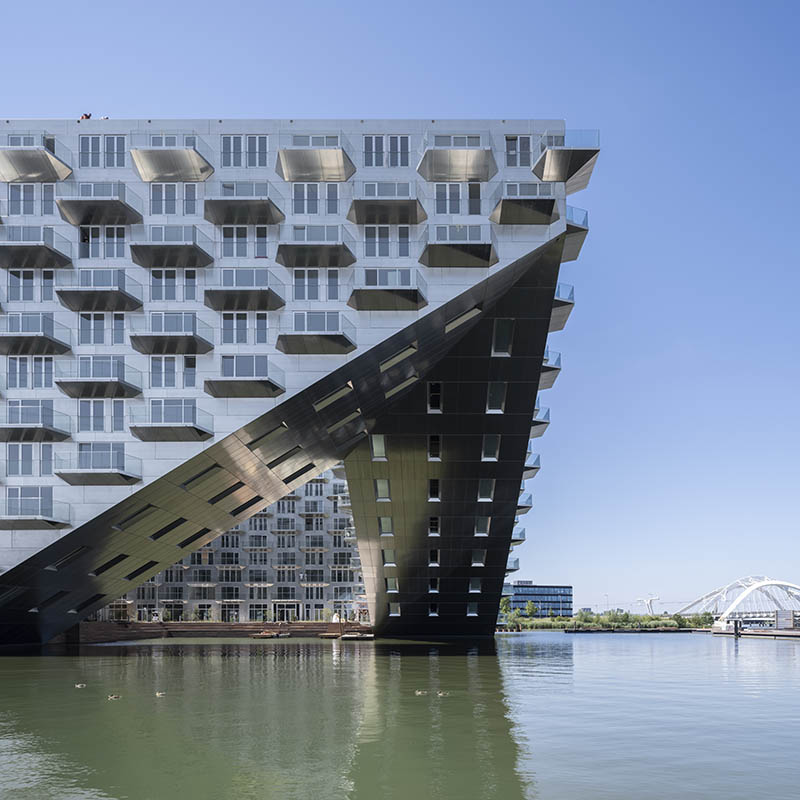
The abstract, untreated aluminum of the façade design reflects the water and gives the volume a different look at any time of day. In contrast, the stepped roof terraces and the jetties landscape are made of wood which gives a tactile appearance.
The building's façade is circular.
BouwInvest, specialised in managing real estate portfolios for institutional investors, bought a major part of the entire project, intending to rent out the apartments. Today, the project is almost completely sold out, except for a few apartments and houseboat lots.
Later this year, Sluishuis will be transferred to VORM Vastgoedonderhoud for warranty work and the maintenance of the Association of Co-owners and for BouwInvest. It will support the Association of co-owners with the parking garage, rental apartments (owned by BouwInvest), and the water program.
Photography: Ossip van Duivenbode


